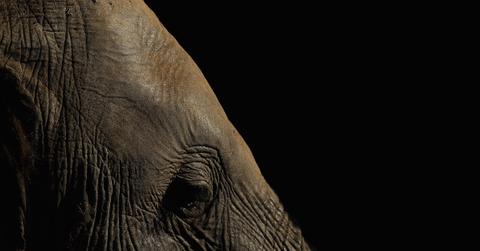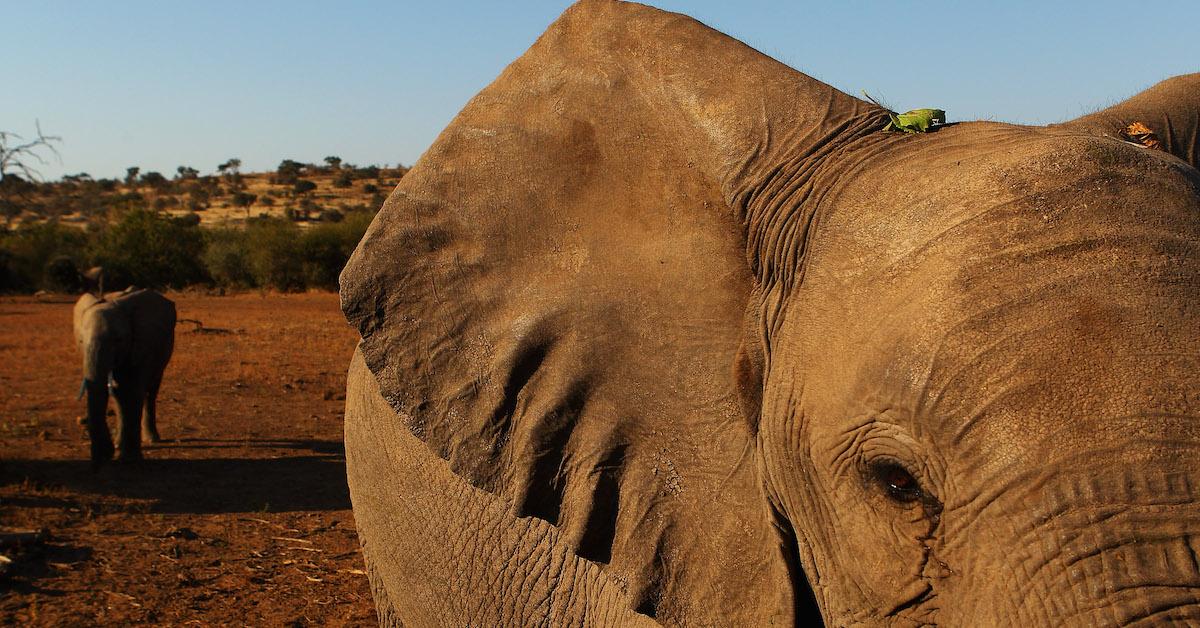African Elephants Are Evolving Without Tusks, Which Is Affecting Population Numbers
Published Oct. 25 2021, 1:03 p.m. ET

Destructive human activity has left a permanent, devastating mark on the African elephant as a species. Over the last few decades, the beloved creatures have evolved to develop without their iconic tusks which are useful in helping them dig, lift trees, and protect themselves in an attack. Poachers had removed and illegally sold them on the black market for several years, and although the evolution happened relatively quickly, it seems as though many of these elephants are now tuskless.
The data that shows the current number of tuskless elephants is truly shocking to animal experts, because it took such a short amount of time for the evolution to take place.
"When we think about natural selection, we think about it happening over hundreds, or thousands, of years," conservationist Samuel Wasser told NPR. "The fact that this dramatic selection for tusklessness happened over 15 years is one of the most astonishing findings."

Elephants are no longer growing tusks, due to evolution brought on by poachers.
Over the last several years, increasing numbers of female African elephants in Gorongosa National Park have been born without their tusks, which experts believe is due to a 15-year ivory war in Mozambique, according to CNN. After the war ended in 1992, animal experts noticed the population of tuskless female African elephants had multiplied by three in 28 years.
"During the war, Gorongosa was essentially the geographic center of the conflict," University of Idaho professor, Ryan Long, told CNN.
"As a result there were large numbers of soldiers in the area and a lot of associated motivation... to kill elephants and sell the ivory to purchase arms and ammunition. The resulting level of poaching was very intense," he continued.
Experts attribute the evolution to the fact that female elephants who were born tuskless during the war were 5 times as likely to survive as tusked elephants.
Many are also shocked that the evolution happened in such a short period of time. This was likely because of how often elephants were having their tusks removed.
"The fact that it occurred so rapidly is rare indeed, and is a direct function of the strength of selection," Long mused. "In other words, it happened so quickly because tuskless females had a MUCH higher probability of surviving the war, and thus a MUCH greater potential for passing their genes on to the next generation."

Can elephants survive without tusks?
Only female elephants can be born tuskless, and although it had previously occurred naturally on occasion, it's become increasingly more common. And while being tuskless helped elephants during the war, as it increased their chances of survival, there are downsides. According to Live Science, not having tusks makes natural survival trickier — they can't lift branches and trees as easily, scratch bark, or protect themselves. It's also harder to dig holes for water without them.
Additionally, it doesn't help with repopulating the species. Due to genetics, tuskless female African elephants who pass on X chromosomes with the mutant gene to their male embryos inhibit their chances of survival. About 50 percent of male embryos (or those who inherit said gene) won't survive.
Since the war, numbers of the African elephant have increased tremendously, but this is a major setback — hopefully they will readapt to their post-war state, and get their tusks back.